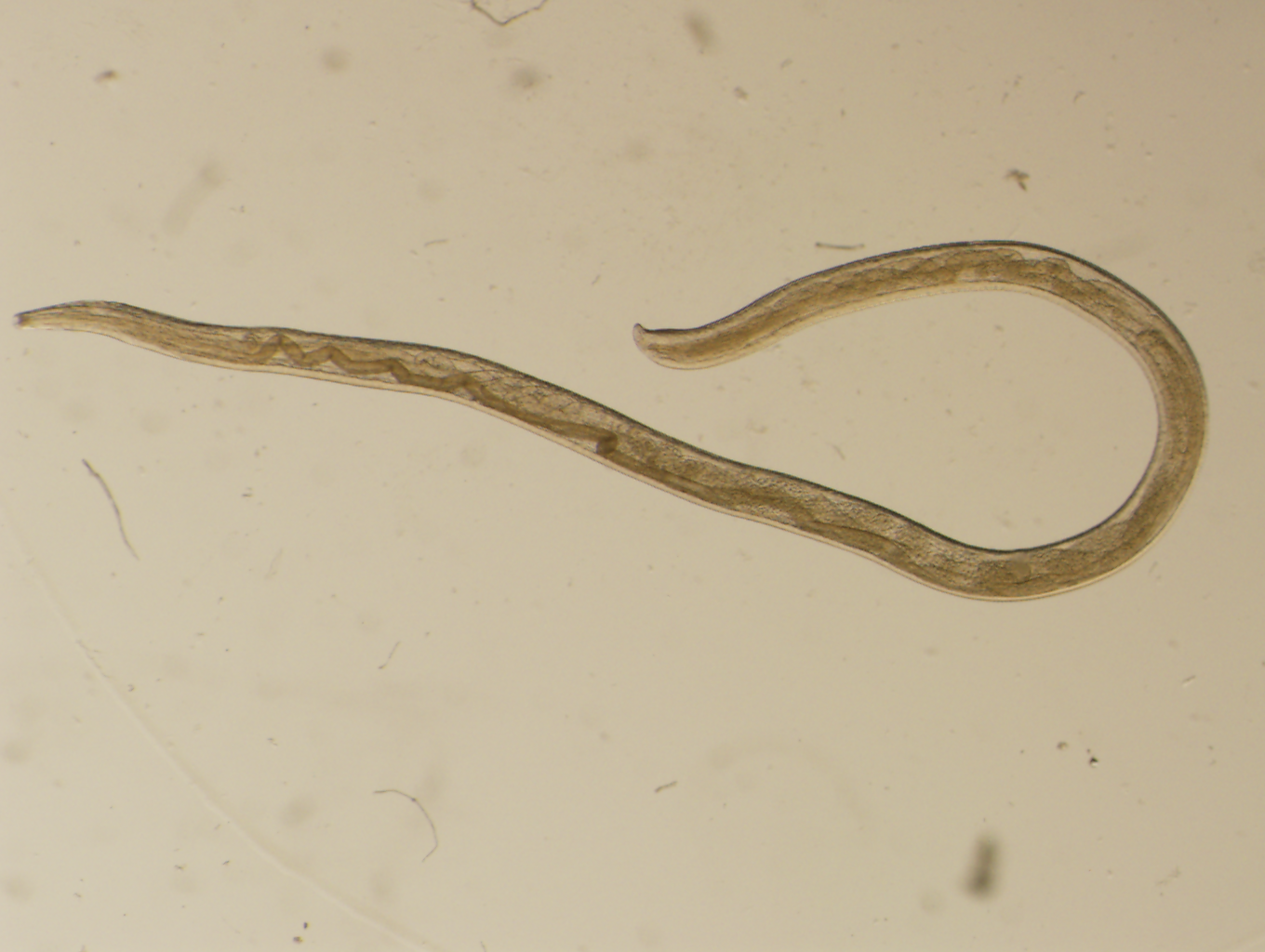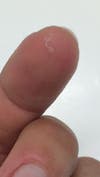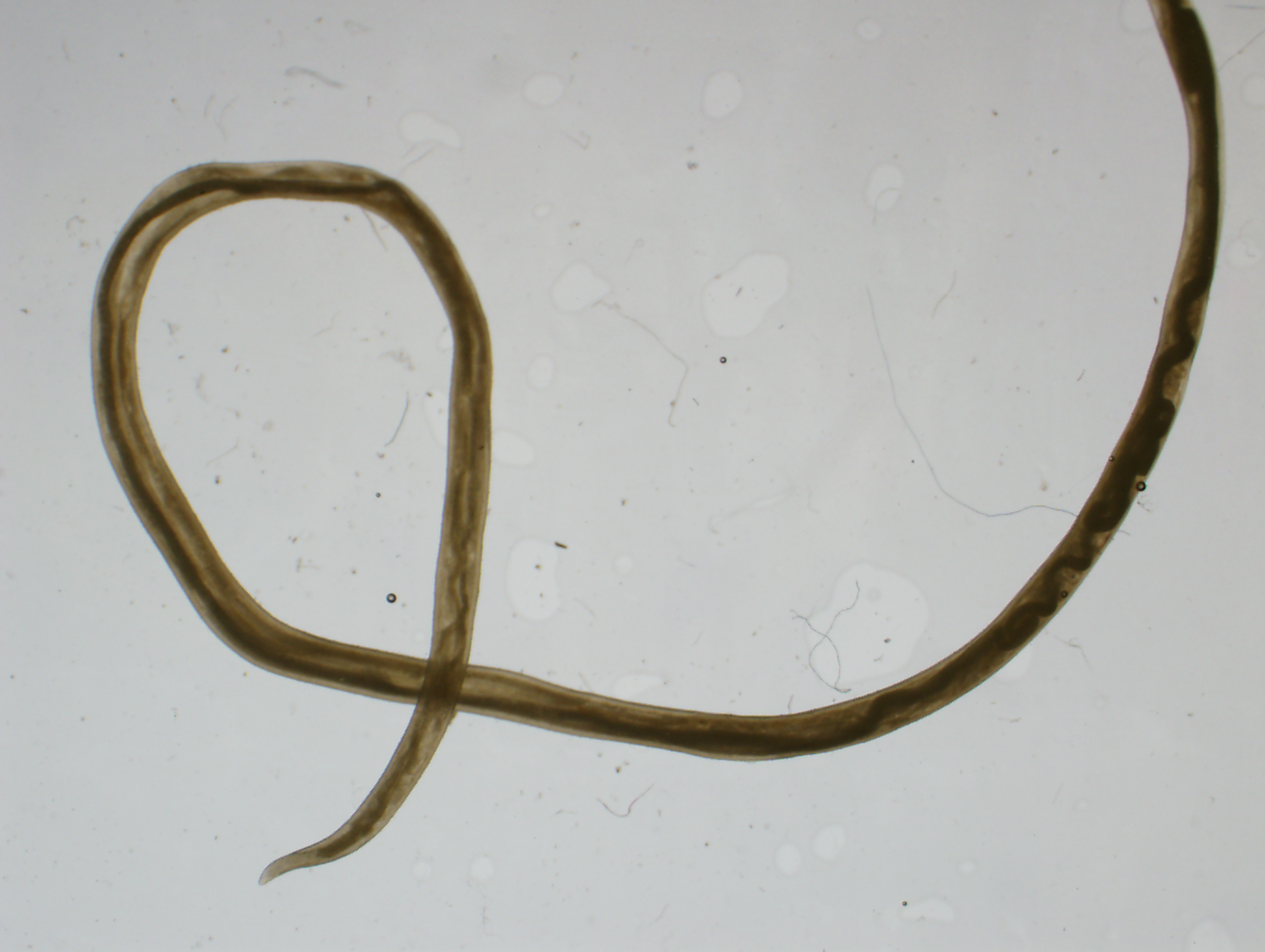Meet the menagerie of parasites that can live in human eyes
Some are accidental guests. For others, our peepers are prime real estate.

When Abby Beckley started work on a salmon fishing boat in Alaska, worms were not high on her list of concerns. But it wasn’t long before the 26-year-old woman became aware of something irritating her left eye. After several days, she finally went digging with her fingers… and plucked out a tiny worm. And it wasn’t the only one.
“I was just pulling them out, so I knew there were a lot,” Beckley recently told National Geographic.
Mystified, Beckley’s doctors sent a sample of the errant worms to the state health department, who forwarded it to Richard Bradbury, a parasitologist at the Centers for Disease Control and Prevention’s Parasitic Diseases Reference Laboratory, which identifies thousands of parasites every year that are too rare for doctors to recognize. He and his colleagues discovered that the offender was a cattle eyeworm, Thelazia gulosa, and were able to offer reassurance that it wouldn’t invade Beckley’s brain or burrow into her eyeball.
It turns out that Beckley was the first person ever known to have her eyes colonized by that particular species. However, the cattle eyeworm is far from the only interloper that’s been found in this part of the body, Bradbury says. Other close relatives of the cattle eyeworm occasionally visit people’s eyes… along with a host of other parasites.
Some of these pests are a nuisance. They might irritate your eye or block your vision from their perch within your eyeball, but won’t do lasting harm. Others can cause more serious problems and even blindness.
On the whole, eye parasites are pretty rare; there was so little information about the cattle eyeworm that Bradbury had to find its description in a scientific paper written in German from 1928. Still, scientists have been able to come up with a few different reasons why parasites might be wriggling across the surface of your eye, or within the globe of your eyeball itself. Here’s what you might want to know in case one of these creatures takes up residence in your peepers.
What’s so great about my eyeball, anyway?
Usually when a parasite takes a shine to a particular part of the body, it’s the gut or the skin around the feet, which are a popular entry point. It’s quite unusual to find a parasite whose natural habitat is the eye. Thelazia, the group of worms Beckley’s visitors belonged to, are an impressive exception.

The worms are spread by face flies, which eat the tears and other secretions in cows’ eyes; Beckley likely picked up the worms before she ever reached Alaska, when she lived on a ranch with a cow in Oregon, says Bradbury, who reported the incident in February in The American Journal of Tropical Medicine and Hygiene. As the face flies feed, they regurgitate the worm’s larvae onto the surface of the eye, where they eventually grow to adulthood and breed. As they crawl around, the worms irritate the eye, causing it to start making tears. This draws more face flies, which get infected by the larvae while they feed.
Generally, if one of these flies lands on our face we brush it away before it has a chance to infect us, which is why it’s usually animals that get infected with Thelazia worms. However, there have now been 11 recorded cases in the United States where these worms have invaded people, and cattle eyeworm will likely find its way into another person in the next few years, Bradbury says. But this is unlikely to become a common threat, or something the general public needs to be concerned about.
There is another kind of parasite that makes a beeline for the eyes, although fortunately it does not infect humans. The eye fluke preys upon freshwater fish like trout; as larvae, they seek out and invade the fish’s skin, then migrate to the lens of the eye where they can grow. To complete its life cycle, however, the parasite needs to end up inside a bird—which is why it sabotages the hapless fish’s ability to avoid predators. The parasite controls the fish’s behavior so it swims in ways that make it easier for birds to spot.
For the worms, it makes sense to seek refuge within the eyeball while waiting for their fish host to be gobbled up. That’s because the eye tissues are so delicate that when it does get inflamed, the animal risks blindness. So the body’s immune response to invaders is dampened in the eye.
Most of the time, though, the eye isn’t a parasite’s intended target.
Then what’s it doing there?
Sometimes, a parasite doesn’t get into our eyes under its own steam but because we’ve unwittingly implanted it. Acanthamoeba, a spiny-looking amoeba that lives in water, doesn’t usually harm humans when we come into contact with it. But on rare occasions, when people store their contact lenses in dirty solution or tap water, the amoeba will make itself at home on the sullied surface. When people put in their contacts, the amoeba will then become trapped between the lens and the eye. “It creates a situation where the Acanthamoeba on that lens may not be able to get washed away by your tears,” Bradbury says.

The amoeba makes the best of this situation by burrowing into the cornea and eating the keratin protein in the eye. This infection is swift, painful, and liable to lead to blindness in the eye if not detected and treated quickly. “With Acanthamoeba it’s a race against time to get the treatment before someone loses their vision,” Bradbury says.
Other times, a parasite gets planted in our eyes because of a case of mistaken identity. The sheep bot fly normally deposits its young inside the nose of sheep. “But when it comes to a human it occasionally gets confused and it shoots the tiny, tiny first stages of the maggot into the eye,” Bradbury says. If they aren’t removed, the maggots will then grow in the eyes, causing conjunctivitis, until they eventually fall out and form a chrysalis so they can develop into grownup flies. Very rarely, the maggots will burrow into the eyeball itself and cause a serious condition called optic atrophy.
But it’s more common for a parasite to wind up in your eye because it got lost on its journey through your body.

So most of them aren’t trying to feast on my eyeball?
It’s far more likely that a larva will wander into your eye by accident, Bradbury says. This can happen when a parasite like dog roundworm or rat lungworm that usually infects other animals ends up inside a human and gets disoriented in the unfamiliar landscape.
There are also parasites specialized to grow within people that occasionally take a detour to our eyes. The African eye worm, Loa loa, gets into our bodies when we’re bitten by infected mango flies in tropical parts of Africa. The adults randomly travel around the body, creating moving bumps under the skin and occasionally crawling over the surface of the eye. African eye worms can grow up to 7 centimeters long, making them probably the biggest parasite to visit our eyes. But, while alarming, these worms typically cause very little damage to the eye.
Unfortunately, the same cannot be said for the nematode Onchocerca volvulus, which causes an illness known as river blindness, or onchocerciasis. The worms are transmitted by a kind of blackfly that breeds along moving water in parts of West Africa, Central and South America, and Yemen. A couple adult worms might not cause any noticeable symptoms. But if you are bitten over and over, you can end up with hundreds of thousands of their offspring moving through your skin in hopes of infecting the next fly to bite you, says Paul Cantey, a medical officer for onchocerciasis and scabies at the World Health Organization.
As with most eye parasites, the bulk of the damage is not caused by the worm itself but by our own immune system. When the larvae die, their corpses release bacteria that create proteins that trigger our body’s inflammatory response. This can cause a number of skin problems, including intensely itchy spots and a loss of elastic tissue that leaves the skin fragile and prematurely wrinkled.

Meanwhile, if the larvae crawl onto the surface of your eye and die, your corneas can become inflamed. If left untreated, the cornea will eventually scar and cloud over, leading to vision loss and finally blindness. The worms can also blind people when they get inside the eye itself and die in the optic nerve.
The more larvae you have in your body, the greater the likelihood that some will unwittingly head to the eyes. “Migrating into the eye is not going to have any evolutionary benefit because you’re not going to get picked up by flies there,” Cantey says.
Then there’s no real reason for most of these things to be in my eye, right?
Most parasites don’t have designs on your eyeball. However, certain pests might find the eye to be an especially friendly habitat when they do wind up there, says Shan McBurney-Lin, a medical student at the Duke University School of Medicine, in Durham, North Carolina.
She and her colleagues recently reported a brand new species of nematode found nestled in the eyeballs of three people in the tropical southwestern Pacific island of Saipan, causing mischief that included blurred vision and light sensitivity. “The physician who was seeing them could see the worm wiggling around,” McBurney-Lin says. He referred them to a surgeon in Hawaii who extracted the worms. After that, their vision mostly returned to normal.

Meanwhile, the scientists examined the worm, and discovered that it didn’t quite match any known parasites. They suspect that it entered through the foot and then migrated into the eye by traveling through the bloodstream or along the optic nerve.
It’s not clear at this point whether the mystery worm (which hasn’t yet received a proper scientific name) found itself in the eyes by accident or actually prefers this part of the body, McBurney-Lin says. Once in the eyes, though, it might have been able to grow larger than it could have had it wound up elsewhere in the body. This is partly because the immune response is diminished in the eye, making it more vulnerable to invaders. “It can get away with a lot more in the eyes,” McBurney-Lin says. The eye also might be an inviting place to settle because it’s roomier than other organs like the liver or spleen.
“Think of it as kind of like the bladder, where you have a hollowed out space; that’s how it is in the globe of your eye,” McBurney-Lin says. “Yeah, there is fluid in there, but that is much easier for a worm to traverse than solid organ.”
Just how worried should I be about getting an eye parasite?
That depends on where you are.
An estimated 198 million people live in areas where infected blackflies may transmit river blindness, Cantey says. At one time, there were villages in sub-Saharan Africa where 30 to 40 percent of the residents had lost their sight and people were forced to abandon millions of acres of arable land. “Decades ago we would have thought the elimination of onchocerciasis was not possible,” Cantey says. However, a drug called ivermectin introduced in 1987 and donated by the pharmaceutical company Merck & Co., Inc., can treat the disease and has even halted its transmission in four countries.
Most of the other wandering parasites aren’t frequent visitors to the human eye. In the United States, Acanthamoeba infects roughly 1 to 2 people per million in a typical year, while Thelazia worms get into somebody’s eyes on the order of once every decade or two, Bradbury says.

And if you do suspect you have a parasite in the squishy recesses of your eye, there are ways to get it out. Depending on the type of parasite, your doctor might remove it surgically or give you medication to kill the invaders and calm your body’s inflammation. As to whether it’s ever a good idea to excavate the worm yourself…
“Oh god, no, don’t do that,” McBurney-Lin says. “That would cause blindness. Just go to your nearest ophthalmologist.”
In rare cases, people have yanked out worms that were dwelling on the surface of their eyes rather than deep inside. However, “You can actually cause some injury to yourself trying to remove something from your eye; better to have a qualified doctor do that,” Bradbury says.
Most of the time, if you follow basic precautions, you are unlikely to encounter an eye parasite. You know the drill: store your contact lenses in proper solution and change it regularly, wash your hands, rinse off fresh vegetables, and cook your meat properly. And if you’re in the tropics—where these pests seem to be more abundant—wear bug spray and protective clothing and don’t walk around barefoot.
“This is a rare occurrence; people don’t need to become paranoid about getting parasites in their eye,” Bradbury says. “For those whom it happens to it’s very disturbing, it may be vision threatening, and it can be very severe, but for most of us if we just go about our normal life and adhere to normal hygienic practices… we should be perfectly fine.”
This article has been corrected to reflect that ivermectin is only recommended to treat river blindness, not prevent it.
